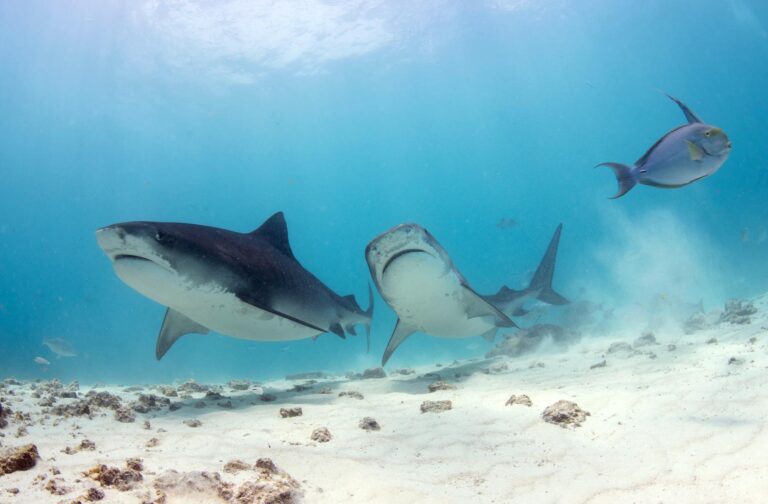MICHEL BRAUNSTEIN takes his camera on a visit to the Maldives’ second-biggest population hub, a southern island that has captured scuba divers’ imagination in recent years
During the briefing, our dive-guide Ina explained that he was one of three with our group, which would allow them to watch properly but also, should any incident arise, to ensure that one would be available to extract a diver in trouble, while the second could repel sharks if necessary and the third could take the other divers to finish the dive close to the reef.
That information was well-meant, but not really encouraging…
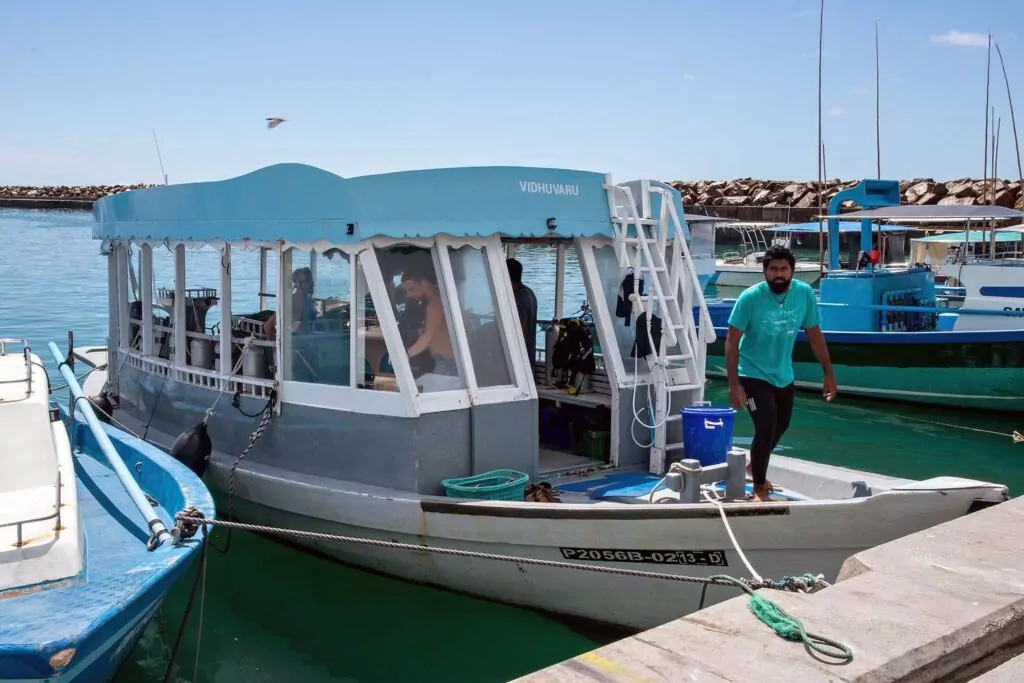
We left the small port of Fuvahmulah for 10 minutes of navigation to the dive-spot, just outside the port. Our divemaster told us to be negatively buoyant on entry and to descend immediately after the jump. This was to avoid curious tiger sharks who might come close to see if there might be anything interesting to taste
Well, that made me a little unsure of how to proceed. As a photographer I can’t dive immediately, but have to wait for someone on the boat to pass down my big camera rig. But in the event it all happened quite fast and smoothly, with no issues arising.
As we neared our target location, I noticed a huge tiger swimming next to us in the blue. It was aiming for the same spot, sensing that interesting snacks could be forthcoming.
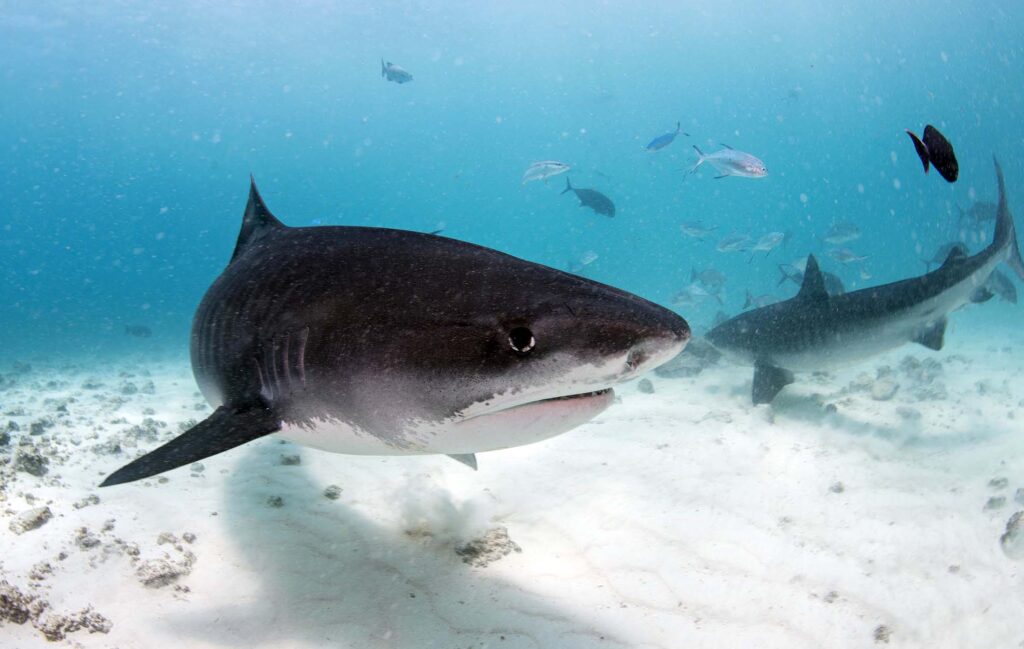
We waited a moment for the previous group to leave, then took their places, strung out in a line. Ina was waiting in the middle of the sandy space for the boat to drop a bucket containing fish-tails. He placed the snacks under some heavy stones, and six or seven tigers came close to dig them out. They then turned, went away and came back again.
When they came in close to Ina, he would push them back gently on their snoots. The older ones, measuring up to 5.7m, know the game and had honed their skills to extract the snacks. For the younger ones – around 3m in length – it’s all still quite new and they don’t always know exactly how to proceed.
We watched these impressive animals perform their breath-taking ballet. They move quite slowly and don’t pay divers too much attention, but they deserve great respect.
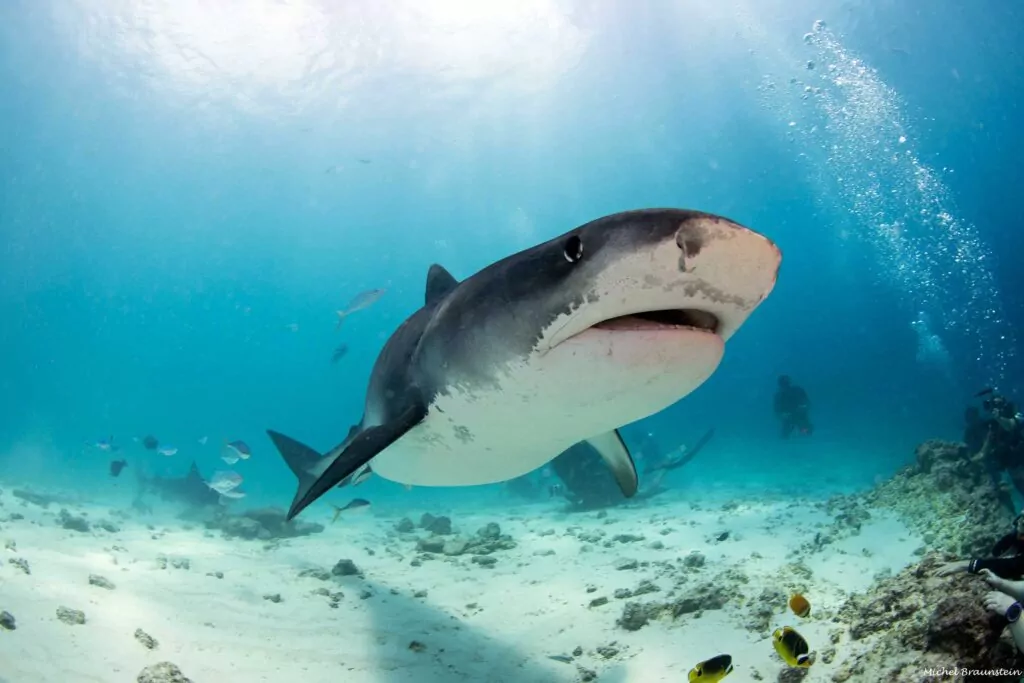
Learning to live with sharks
On my second dive-day in Fuvamulah, Ina came to take me from where I was observing the tiger sharks in the line with the other divers, and brought me out to the centre of the playground.
Wow – I could almost touch the sharks, or they could touch me! It was an unforgettably exciting experience.
Over the past few years, Fuvahmulah has become a world-famous destination for divers seeking close encounters with large tiger sharks. The green island is located in the deep south of the Maldives archipelago, a 70-minute flight from Malé, and has its own airport.
Tigers have been spotted near the island since the first people arrived there some 1,000 years ago. The islanders are not afraid of tiger sharks – on the contrary, they have learnt to live with them.
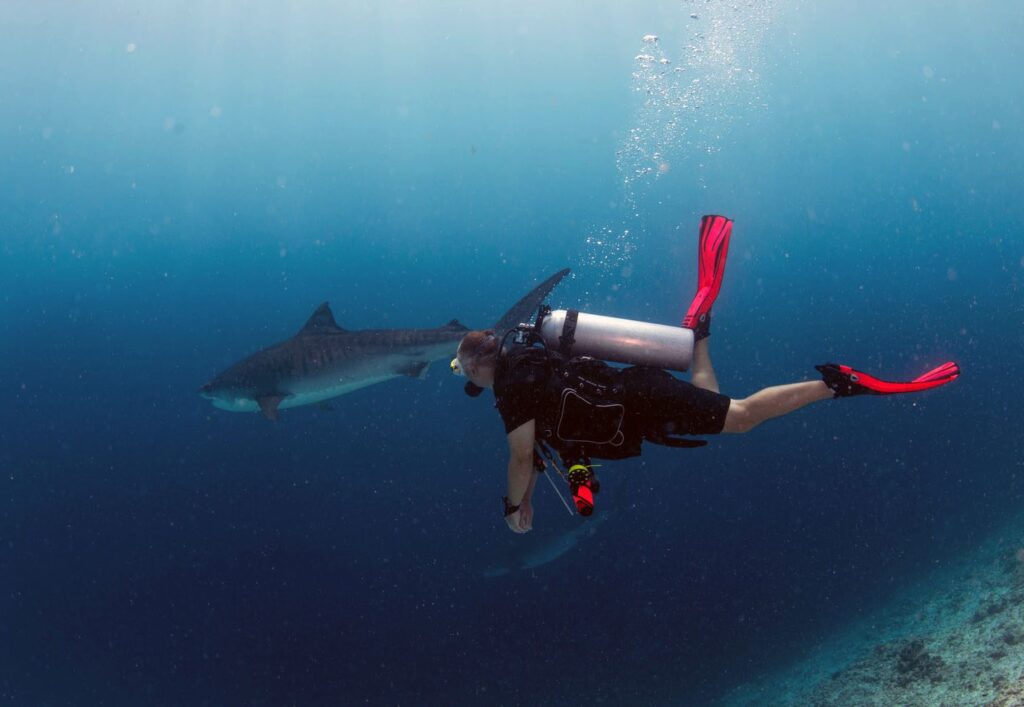

Many generations ago, fishermen cleaning their catch would jettison the remains in the deep ocean. Over time, to save boat fuel, they started throwing them just outside the harbour, and noticed that the sharks would approach the entrance every day to enjoy the meal.
Today, the islanders continue this tradition of distributing snacks on the outskirts of the harbour to please their tiger friends. They invite visitors to meet the sharks, educate them about the predators and make it clear to them that humans are not shark food. They also release hooks and broken line from sharks that managed to get away from “sport” fishermen.
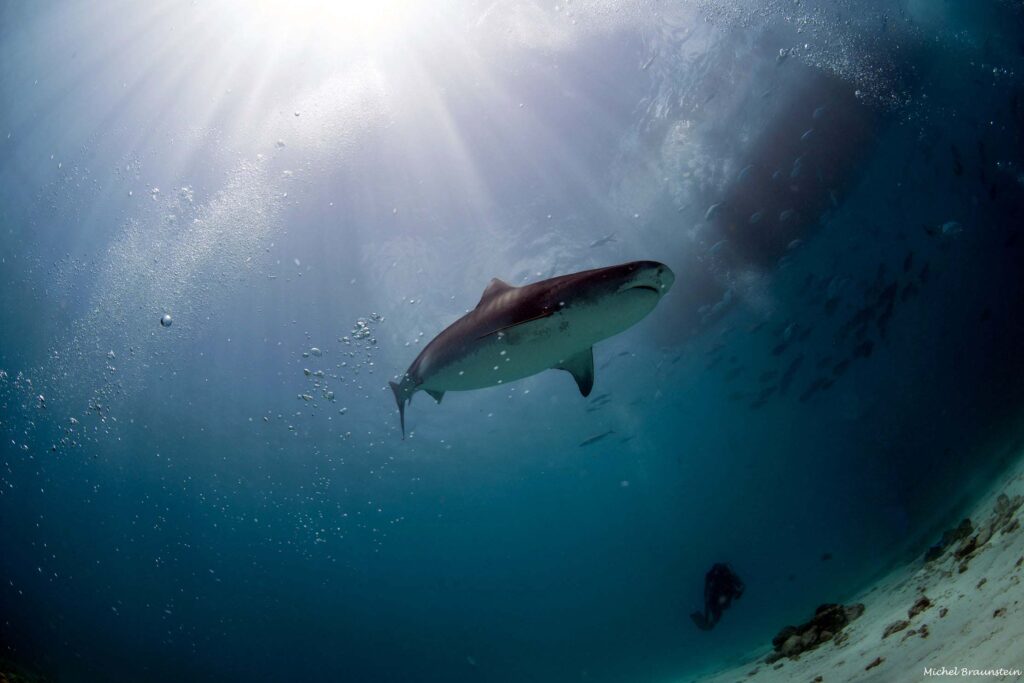
Tigers are among the few shark species (about 10 from 500) considered potentially dangerous to humans. Fuvahmulah sharks might be impressive and demand respect, but they do not set out to harm people.
Two main and three smaller dive-operators cater for visitors to Fuvahmulah. I chose to dive with Pelagic Divers Fuvahmulah and was glad that I did. All five centres share the same main tiger dive-site, and co-ordinate diving schedules for their various groups.
Using bait is often criticised, but because these sharks are accustomed to consuming fishermen’s catch remnants, they are simply being fed the sort of food they would normally eat anyway.
The technique doesn’t disturb the sharks’ natural life-cycle. They don’t become dependent on these “snacks”, nor do they become aggressive when they don’t get them, and they know how to feed themselves in the ocean. It simply facilitates observation and interaction, allowing divers to get to know and better understand them.
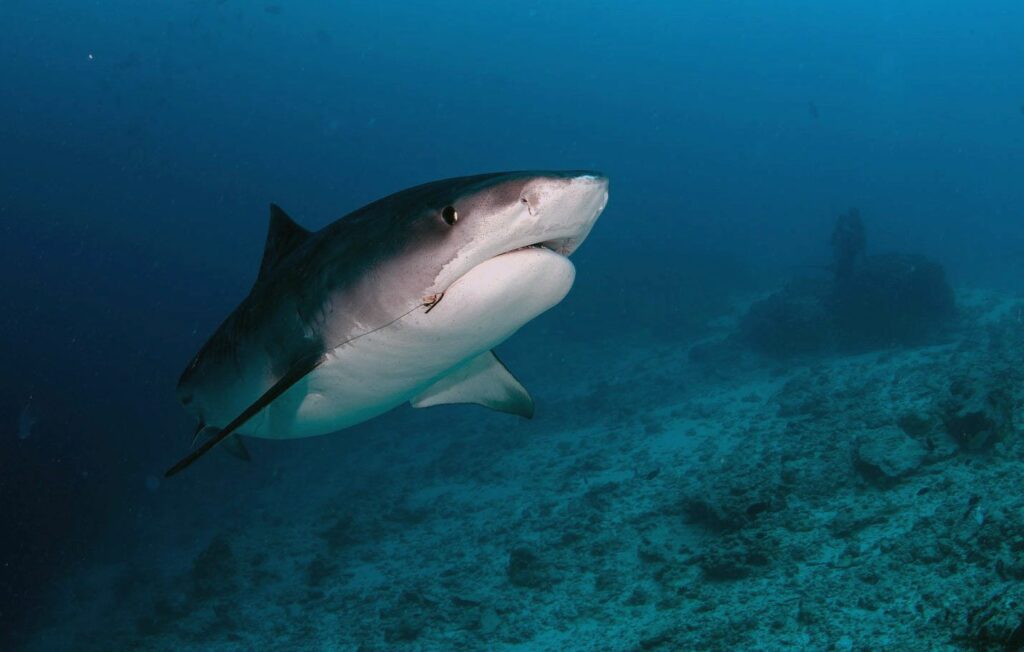
Most importantly, it underlines once again that these are not the killers still falsely described in movies and the tabloids.
Fuvahmulah is one of those select places in the world where tiger sharks can be approached and observed easily, at depths of around 10m. Most of them are local and have been given names, though at times visitors or new pups will join the family.
Complementary dives
When not diving with tiger sharks, Fuvahmulah’s reefs offer beautiful complementary dives, and many other creatures can be seen, some local and others passing through, sometimes according to the season.
Whitetip and grey reef sharks are quite often spotted and threshers can sometimes be seen at the deep cleaning stations, 40-50m down. They have to be approached very slowly because they’re so shy, and liable to swim rapidly away to greater depths.
In the right current conditions, you might come across scalloped hammerhead sharks. Whale sharks are also seen from time to time.
Black oceanic manta rays are present around the cleaning stations year-round, but especially during their mating season between March and May. Depending on the season, you can also hope to see shoals of barracuda and yellowfin tuna, sailfish, mola mola and even whales.
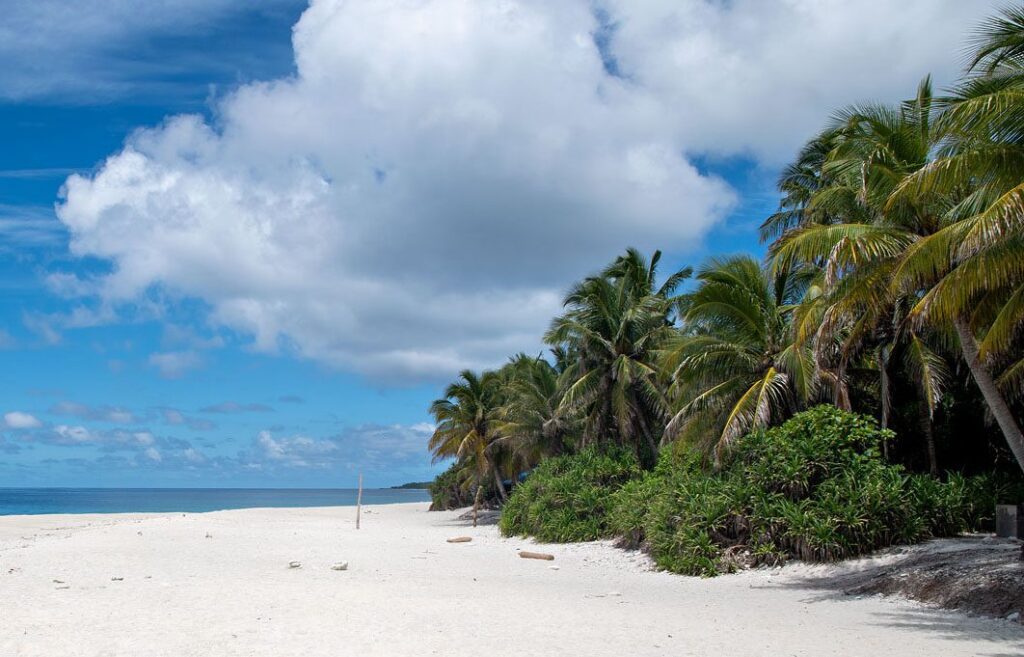
Fuvahmulah is a big enough island to offer a variety of ways of passing the time. Dreamy Thoondu beach is a must, while Bandaara Kilhi and Dhadimago Kilhi, two beautiful freshwater lakes, lie in a great area for hiking and spotting the many species of birds and fish to be found there.
You can dip into a mud site that’s supposed to be very healthy for the skin; some pre-Islamic historical sites are worth visiting; and there’s an atmospheric pub called Led Zeppelin that also serves succulent meals. Renting a scooter makes it easy to move between attractions.
Fuvahmulah has some 14,000 inhabitants divided between eight districts, making it the Maldives’ second-largest population hub after Malé. Its economy is based on fishing and agriculture and it is the country’s biggest producer of mangos and bananas. The locals speak a dialect unique to the island, and distinct from the official Maldivian Dhivehi language.
Accommodation ranges from guest-houses such as the close-to-nature Tiger Shark Residence to Atraxis, a more modern and international hotel. I will surely go back to this green island as soon as I can.
Tiger shark study imminent
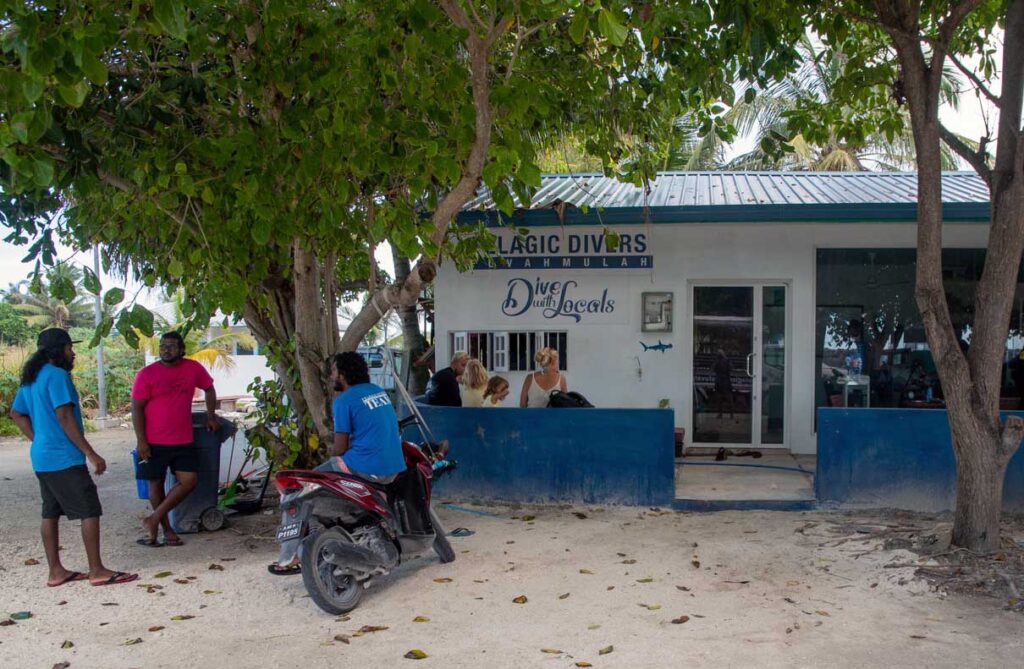
Fuvahmulah Dive School says it has been almost six years since it embarked on tiger-shark monitoring, and reports that it has identified more than 200 individuals and revealed facts about their pregnancies, healing abilities and social communications.
The first published study is being prepared, covering the tiger-shark population structure, residency and abundance, and help is sought especially from underwater photographers who have visited the island.
Any video, stills or logbook observations would be welcome, but particularly footage captured from December 2016 onwards with the sharks’ patterns clearly visible, and the date, time and location recorded. It can be submitted using Dropbox, Google Drive, Gmail or WeTransfer to tigerzoofvm@gmail.com

Michel Braunstein has been working on underwater photographic projects, particularly involving models, for more than 30 years. @michelbraunstein
Also on Divernet: Tiger Tiger, Tiger Sharks Range Far But Don’t Mix, Tiger Sharks Range North – Good For Divers, 22° Is Tiger Sharks’ Goldilocks Temperature
